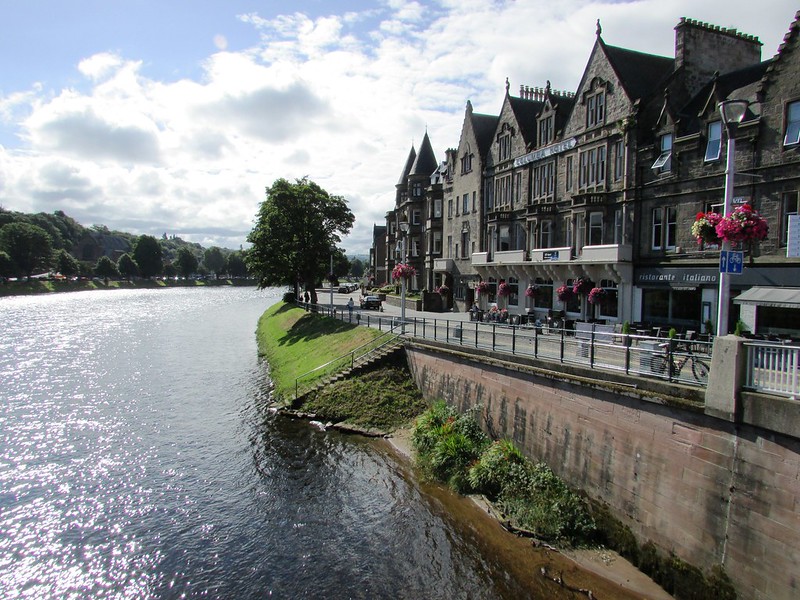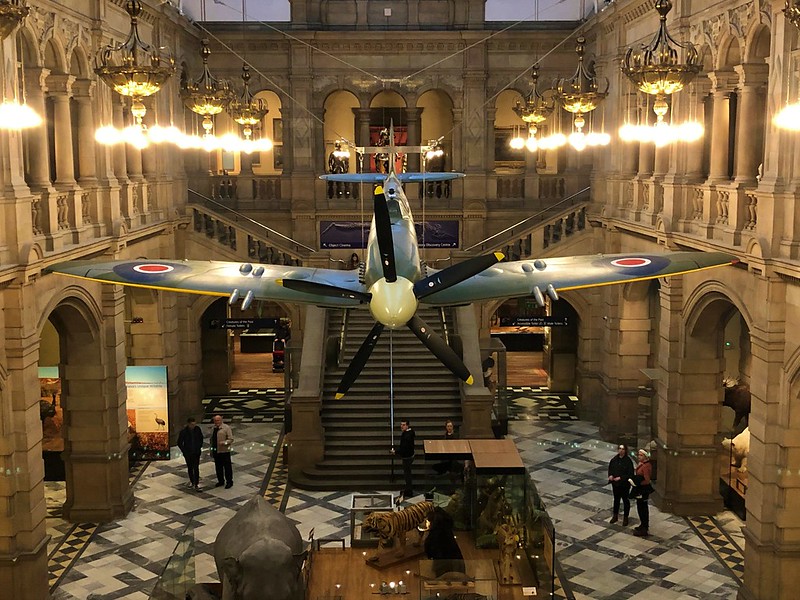Scotland’s largest city and the UK’s third largest (once known as ‘the second city of the empire’), Glasgow has many fine art galleries and museums but one of the most popular is undoubtedly Kelvingrove Art Gallery and Museum which houses one of Europe’s great art collections. It is also one of the top three free-to-enter visitor attractions in Scotland and one of the most visited museums in the United Kingdom outside of London. It could be considered to be the Scottish Smithsonian.
 First opened in 1901 and reopened by Her Majesty Queen Elizabeth II in July 2006 after a three-year closure for major renovations, Kelvingrove Art Gallery and Museum was an immediate success with the public with 2.23 million visitors to this impressive red sandstone building in the following year.
First opened in 1901 and reopened by Her Majesty Queen Elizabeth II in July 2006 after a three-year closure for major renovations, Kelvingrove Art Gallery and Museum was an immediate success with the public with 2.23 million visitors to this impressive red sandstone building in the following year.
 With everything from art to animals, in over 8000 exhibits in 22 state of the art galleries, its natural history displays, its cultural and historically important artefacts (Kelvingrove has one of the top three collections of arms and armour in the world) and its collections of art representing many different schools, Kelvingrove contains an impressive range of internationally significant displays.
With everything from art to animals, in over 8000 exhibits in 22 state of the art galleries, its natural history displays, its cultural and historically important artefacts (Kelvingrove has one of the top three collections of arms and armour in the world) and its collections of art representing many different schools, Kelvingrove contains an impressive range of internationally significant displays.
The museum houses Dali’s Christ of St John of the Cross and there are separate galleries devoted to Dutch artists including work by Rembrandt; French artistes with Monet, Renoir, Van Gogh and one of the few female impressionists Mary Cassatt. The Glasgow Boys and the Scottish Colourists have their own galleries and the Charles Rennie Mackintosh and Glasgow Style gallery includes many important works. There are also a number of temporary displays and exhibits which change over time so you never really know what you’re going to see on your next visit.
The Kelvingrove Art Gallery and Museum also has its own beehive. Always a popular exhibit, the Kelvingrove beehive allows you to look deep inside the hive and see its structure in detail and watch the bees being, well, busy little bees!
There are persistent rumours that the museum is home to Scotland’s only fossilised Haggis. That may simply be a folk myth but it’s worth keeping your eyes open just in case it’s lurking somewhere amongst the other exhibits. And don’t just wander around a bit and look at the exhibits, take some time to examine the building itself. It’s a magnificent edifice in its own right and well worth the reported £28m it cost for the renovations.
The proud possessor of a Gold Award from Visit Scotland’s Green Tourism scheme Kelvingrove Art Gallery and Museum is located on Argyle Street, in Kelvingrove Park in the West End of the city near the main campus of the University of Glasgow. The park site also includes Kelvingrove Skatepark.
The museum is easy to get to and is fully accessible to the disabled – even to the extent of providing wheelchairs for visitors to use (subject to availability). There is a Glasgow museums gift shop, a restaurant and a cafe (feel free to bring your own sandwiches) and guide dogs are welcome. Admission is free (donations are appreciated).
PS: Don’t forget to say ‘hello’ to Sir Roger as you pass through the West Court!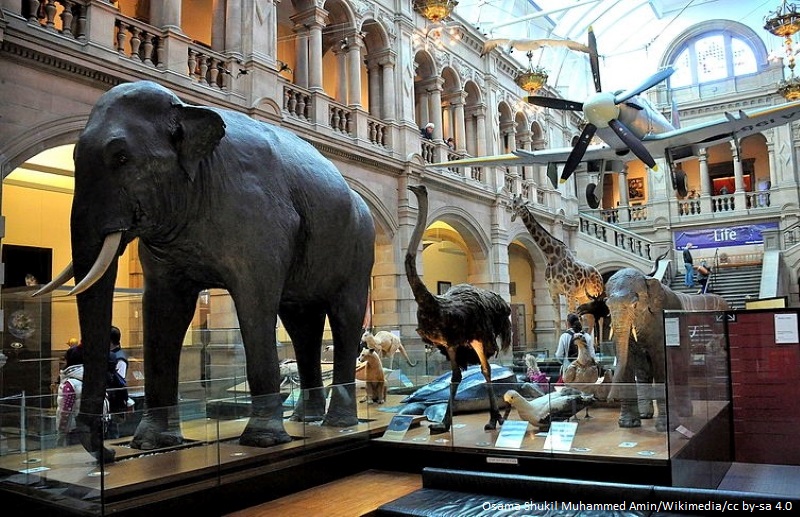
Check out the Kelvingrove Museum Website:
Watch A Video About The Kelvingrove






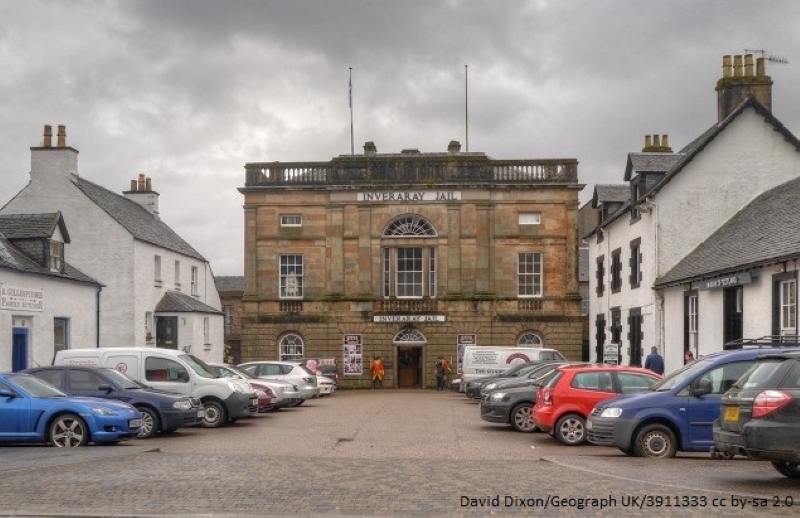

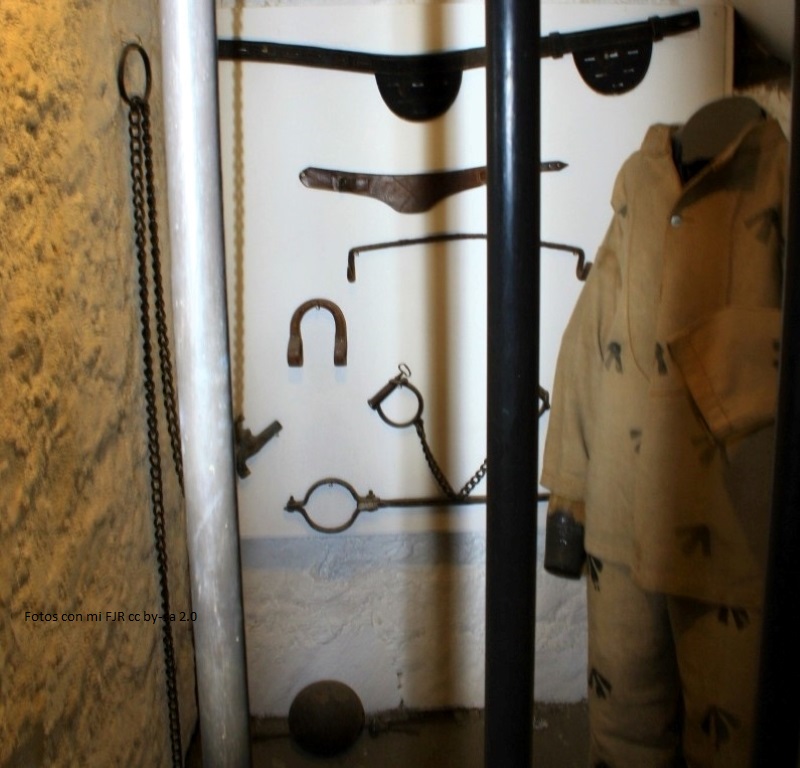
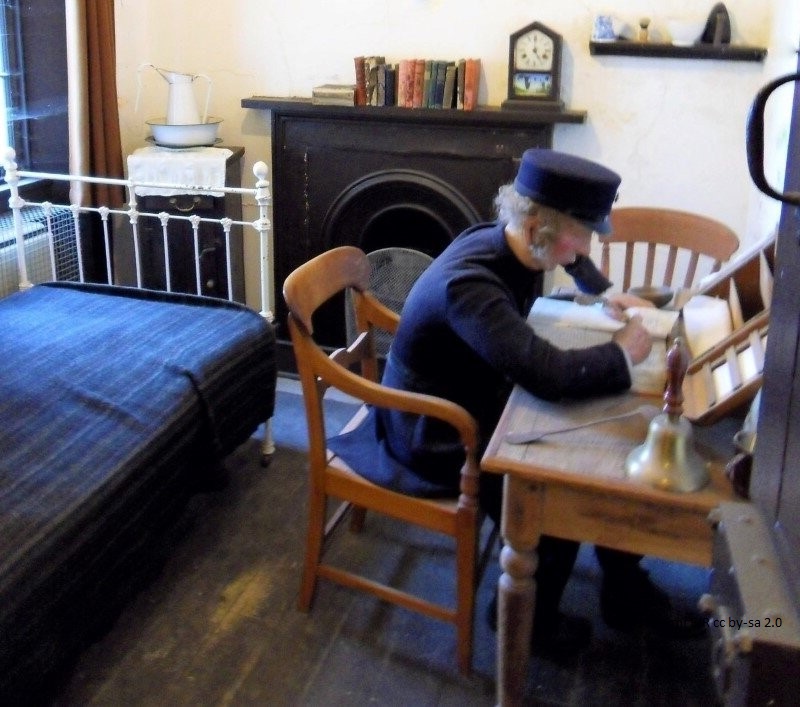
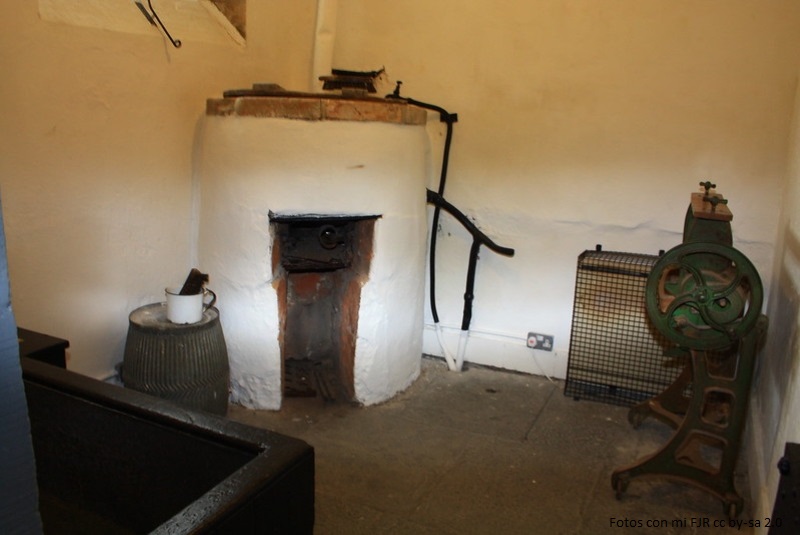
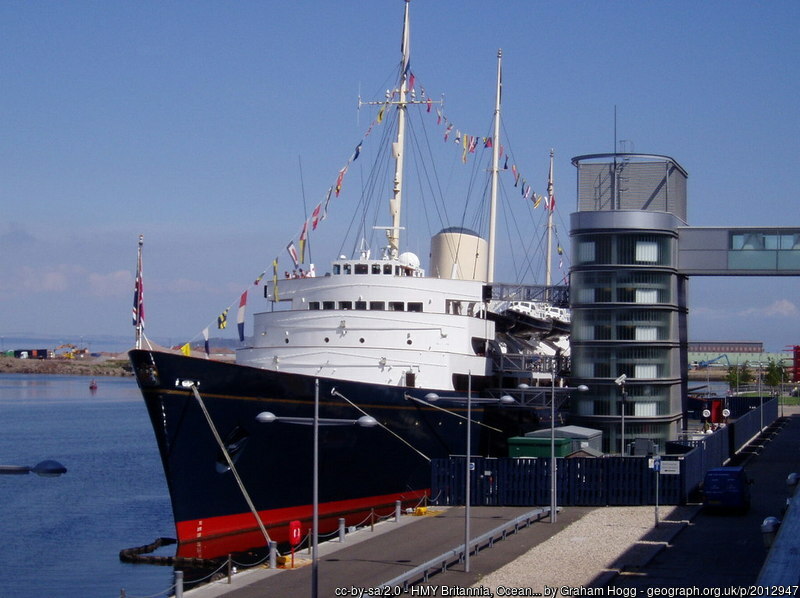 Coming to Edinburgh? No vacation trip to Scotland’s capital city would be complete without a visit to the Royal Yacht Britannia, one of Scotland’s most popular visitor attractions. Launched in 1953 Her Majesty’s Yacht Britannia (her proper name) was a much-loved favourite of Her Majesty Queen Elizabeth II and the British royal family for over 40 years and during her lifetime was probably the most famous ship in the world.
Coming to Edinburgh? No vacation trip to Scotland’s capital city would be complete without a visit to the Royal Yacht Britannia, one of Scotland’s most popular visitor attractions. Launched in 1953 Her Majesty’s Yacht Britannia (her proper name) was a much-loved favourite of Her Majesty Queen Elizabeth II and the British royal family for over 40 years and during her lifetime was probably the most famous ship in the world.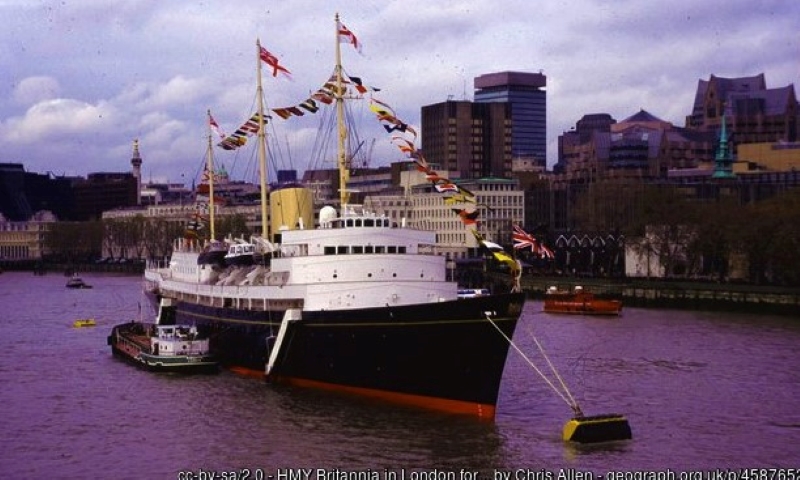 From her launch to her decommissioning in 1997 she travelled more than a million nautical miles on the high seas and during her career she was the scene of many official receptions and state visits to countries all over the world. She played host to many VIPs and heads of state, including several Presidents of the United States of America. In her role as a floating ambassador for Great Britain she helped to generate many billions of pounds in trade deals and was also used by the royal family as a holiday cruise ship. In 1981 when Prince Charles married the then Lady Diana Spencer they spent their honeymoon aboard her.
From her launch to her decommissioning in 1997 she travelled more than a million nautical miles on the high seas and during her career she was the scene of many official receptions and state visits to countries all over the world. She played host to many VIPs and heads of state, including several Presidents of the United States of America. In her role as a floating ambassador for Great Britain she helped to generate many billions of pounds in trade deals and was also used by the royal family as a holiday cruise ship. In 1981 when Prince Charles married the then Lady Diana Spencer they spent their honeymoon aboard her.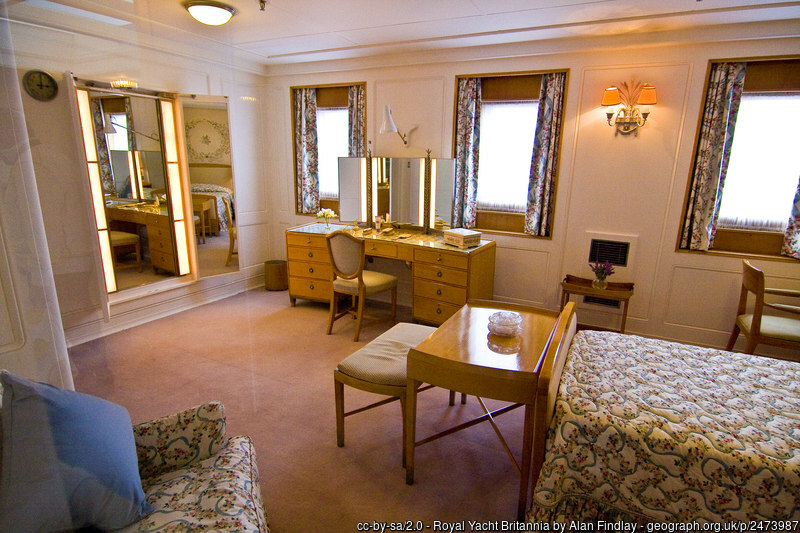
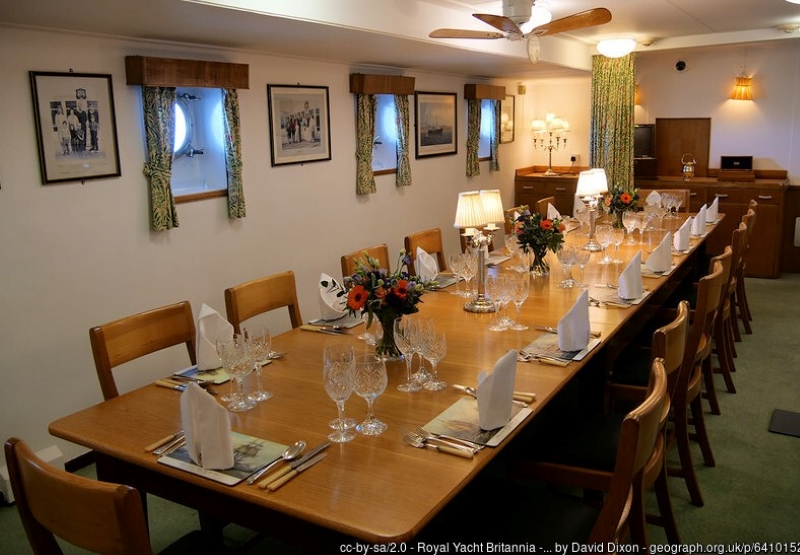 On your visit you will be able to explore the bridge, the state apartments, the crew’s quarters and the engine room. Highlights of the tour through the five decks include the sun lounge, the Queen’s bedroom, the state dining room and drawing rooms, the Royal Marines’ barracks and the sick bay.
On your visit you will be able to explore the bridge, the state apartments, the crew’s quarters and the engine room. Highlights of the tour through the five decks include the sun lounge, the Queen’s bedroom, the state dining room and drawing rooms, the Royal Marines’ barracks and the sick bay. 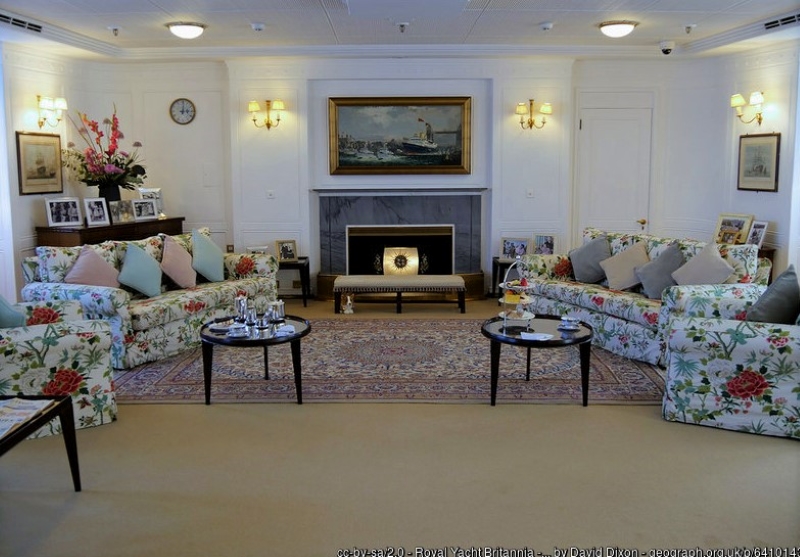 The majority of items on view are the originals (on loan from the Royal Collection and other contributors) including furniture, paintings and photographs from when Britannia was in royal service.
The majority of items on view are the originals (on loan from the Royal Collection and other contributors) including furniture, paintings and photographs from when Britannia was in royal service.
